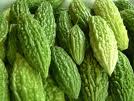Bitter Melon (Momordicin Charantia) or ampalaya, paliya, amargoso as they are known in Philippine local dialects can neither cure nor prevent diabetes, but it can help control the disease.
Diabetes Mellitus is a disorder in which the level of glucose (sugar) in the blood is abnormally high because the pancreas, a gland located behind the stomach, produces little or no insulin, or because the body’s cells do not respond appropriately to insulin.
In either case, glucose, the main source of energy of our cells is not able to get inside the cell where it is needed and instead accumulates in the blood.
There is no known cure or prevention for diabetes yet, but we know enough of the disease to be able to control it and avoid its complications.
Diabetes can be controlled through a combination of diet, exercise and medicine. There are two main types of diabetes mellitus: Type 1 and Type 2. Most (90-95%) diabetes suffer from type 2 (non insulin dependent diabetes mellitus), and it is in this type of the disease when bitter melon has been proven to have beneficial effects.
A substantial number of scientific studies on the effect of bitter melon on blood glocuse levels have been undertaken. The latest of these studies is a 10 year trial conducted by the Philippine Council for Health Research and Development (PCHRD).
The study compared bitter melon leaves (the makiling variety) with the anti diabetes drug glibenclamide. The results of the trial showed that a 100 mg. per kilo dose per day of bitter melon is comparable to 2.5 milligrams of the anti diabetes drug glibenclamide taken twice a day.
This means that the action of bitter melon on blood sugar is equivalent to the action of the medicine. As a result, the Department of Health (DOH) has elevated the status of bitter melon from a mere nutritional supplement to a real medicine.
The blood sugar level lowering property of bitter melon is attributed to its momordicin content, a substance that is sometimes called plant insulin. This is also the substance responsible for the bitter taste of the plant’s leaves and fruits.
The clinical studies on the sugar level lowering effect of bitter melon have so far been limited to its leaves either eaten as food or in the form of tablets, capsules and teas.
There are no conclusive studies on the effect of fruits and roots yet. Diabetics who wish to try bitter melon in fresh form, they can culture the plant and make their own preparations.
To prepare bitter melon extracts, the Department of Health (DOH) suggests the following steps:
*** Wash thoroughly and finely chopped bitter melon leaves.
*** Add 6 tablespoons of the chopped leaves to 2 glasses of water.
*** Boil the mixture for 15 minutes in uncovered pot.
*** Cool down and strain.
*** Drink 1/3 cup of the solution, 3 times a day.
Alternately, bitter melon tops can be steamed and eaten (1/2 cup 2 times a day).
Incidentally, regular intake of bitter melon alone is not enough to control the blood sugar of most diabetics. People with the disease must still exercise, stick to a diabetic diet or other medicines may have to be taken and finally people with diabetes must see their physician on a regular basis.
